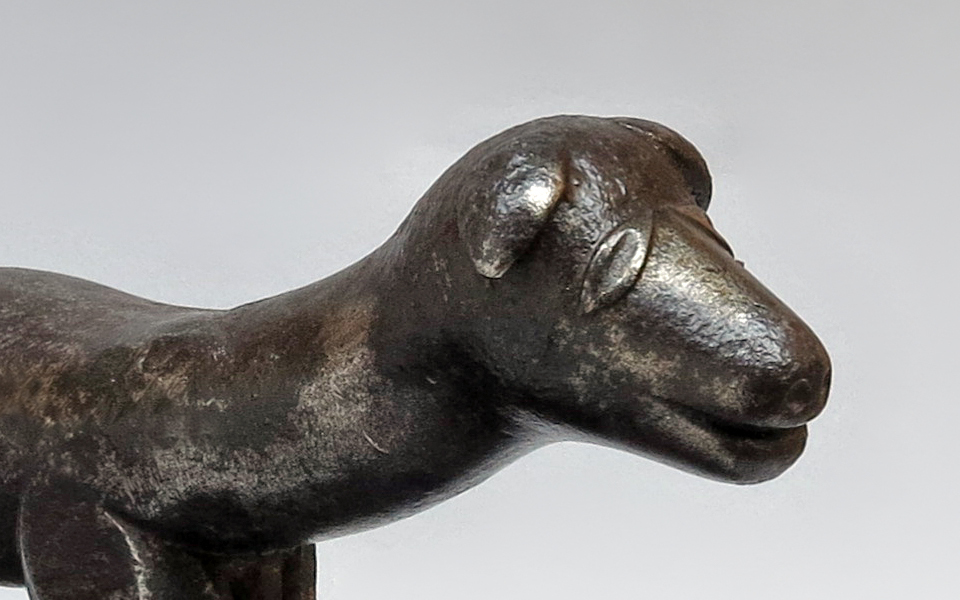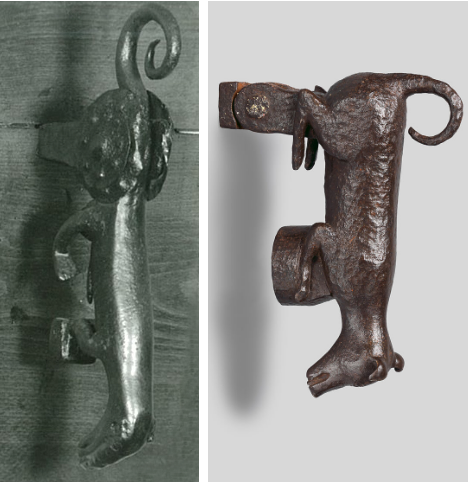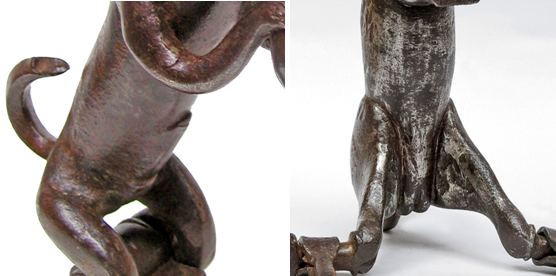
A rare Hispanic doorknocker
Along with locks and keys, doorknockers are the most intricately executed iron objects in which the highest aesthetic levels are reached, so that they can be considered true works of art. They usually originate from the inspiration of anonymous iron craftsmen who mould a hard and elusive material into small sculptures.
From the Middle Ages onwards, people in the European world began to feel the need to keep their homes safe, and so private houses – as well as sacred buildings – were equipped with increasingly robust and inviolable entrance doors on which doorknockers were fixed, allowing a visitor to announce himself and request access.
These small objects, rare and interesting because of their absolute uniqueness, thus take on a symbolic value of protection: they watch over the safety of their owners and the treasures that the house holds, just as in sacred places over relics and what is most dear to the community of believers.

Our beautiful knocker is carved in the round and engraved in the shape of a dog: the animal’s body is characterized by well-defined and spread hind legs and by front legs ideally represented by a quadrangular block acting as a knocking element; the head is leaning forward and both eyes and mouth are half-open, while the serpentine tail is curved back on itself; the pivot of the doorknocker is regulated by two small laces articulated on the hind legs.
The most typical subjects for doorknockers are fierce animals such as lions, dragons or snakes, whose function is to terrify, frighten and defend the entrance from attackers. Since ancient times, however, the dog has also been the guardian and protector of the home, and consequently from the Middle Ages onwards, it became also a favourite subject for doorknockers.

The theme of the dog in doorknockers is especially widespread in the Spanish area, in a variety of specimens of different qualities and shapes, documented in numerous public and private collections; As an example, we show here two very similar to ours, one exhibited at the Museu Cau Ferrat in Sitges and the other at The Metropolitan Museum of Art in New York.

In the most sophisticated examples of dog-shaped doorknockers, the maker even goes so far as to detail the sex of the animal, which is usually male. One of the exceptional features of the piece presented here is that it is instead a female dog, as can be seen from the genitals that its maker has intentionally depicted.

DOORKNOCKER
Wrought, carved and engraved iron
Spain
17th century
Provenance: American private collection
References: AA.VV., Doorknockers, Cesati e Cesati, Milano 2009.
© 2013 – 2023 cesatiecesati.com | Please do not reproduce without our expressed written consent
Alessandro Cesati, Via San Giovanni sul Muro, 3 – 20121 Milano – P.IVA: IT06833070151